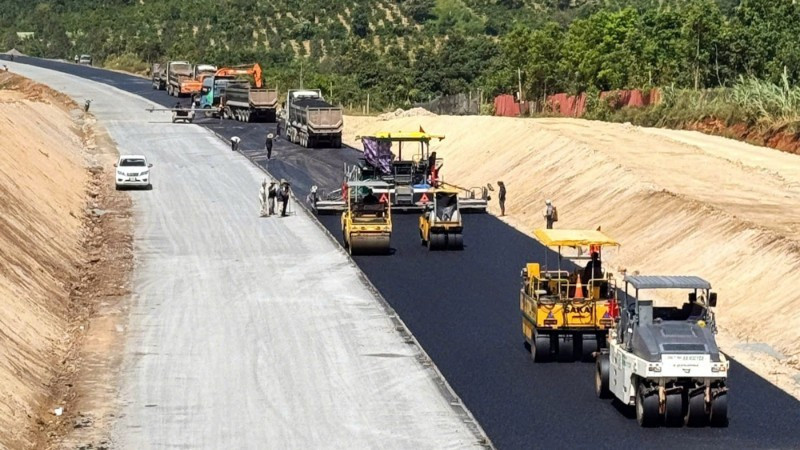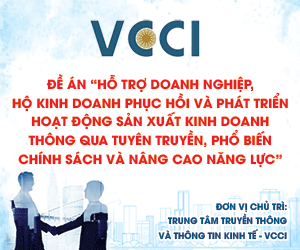Viet Nam’s economy gains momentum, stays on track with targets
In 2025, Viet Nam’s economic growth is being driven by traditional and emerging engines. Continued growth, well-controlled inflation, stable exchange rates, and safe foreign reserves have created favourable conditions for businesses to maintain production and reduce input cost pressures.

Viet Nam’s economy continued to show positive signs in the third quarter and the first nine months of 2025, posting a growth rate of 7.85%, approaching the annual target of over 8%.
Maintaining macroeconomic stability
Assessing the economic performance, Nguyen Thi Mai Hanh, Head of the National Accounts Department under the General Statistics Office, highlighted the strong rebound, with GDP growth in the third quarter of 2025 reaching 8.23% — the second-highest level since the pandemic, only after the 14.38% surge recorded in the third quarter of 2022.
For the first nine months, GDP grew by 7.85%, with both supply- and demand-side indicators showing encouraging trends. On the supply side, several key sectors, including manufacturing and processing, electricity production and distribution, wholesale and retail trade, accommodation, and catering services, achieved impressive results. Industrial production reflected the robust recovery of major industries, particularly manufacturing and processing. On the demand side, the main growth pillars — investment, consumption, and exports — continued to perform strongly, significantly contributing to overall growth.
Specifically, investment maintained solid momentum thanks to spillover effect from public investment. Disbursement of public investment capital over the first nine months was estimated at 550 trillion VND, equal to 55.7% of the annual plan and up 27.8% year on year. Total retail sales of goods and consumer services increased by 9.5%, showing that domestic consumption has recovered substantially after the pandemic. Total export turnover rose by more than 16%, while the trade surplus reached nearly 17 billion USD — driven by the recovery of global supply chains and efforts to diversify markets and export products.
Importantly, alongside traditional drivers, new growth engines are being actively developed. The digital economy and innovation are opening opportunities for the emergence of new industries as digital transformation accelerates across e-commerce, finance and banking, logistics, and even public administration through the application of digital technologies such as AI and Fintech.
Viet Nam is also seeing growing opportunities to attract high-quality foreign direct investment (FDI), particularly in renewable energy and high technology, amid global supply chain shifts. Institutional reform and business environment improvements are also important factors drawing in both private and foreign investment, further contributing to GDP growth.
“The combination of traditional and new growth drivers not only helps sustain high growth but also lays the foundation for sustainable development and strengthens national competitiveness,” Nguyen Thi Mai Hanh observed.
Addressing three growth bottlenecks
One of the bright spots in the economy over the past nine months has been the sharp rise in business registrations. According to the General Statistics Office, more than 200,000 businesses entered or re-entered the market, up 26.4% year on year and 1.3 times higher than the number of firms exiting from the market. In September alone, the number of new and returning businesses surged 55.6% compared with the same period last year, nearly doubling the number of closures.
Business development has become increasingly vibrant, with a strong wave of start-ups, restored business confidence, and growing additional capital among operating enterprises, while the rate of business withdrawals is shows signs of slowing down.
According to Nguyen Minh Thao, Deputy Director of the Department for Enterprise Development and Business Environment under the Institute of Strategy and Policy on Finance and Economics (Ministry of Finance), these results reflect recovery across most industries, reinforcing business confidence and demonstrating that institutional and business environment reforms have become an important driver of GDP growth in the third quarter and the first nine months of 2025.
Such achievements stem from a combination of factors, including the Politburo’s Resolution No. 68-NQ/TW (issued on May 4, 2025) on private sector development, the effective implementation of the two-tier local government model, amendments to laws on investment and business, and the Government’s ongoing reform efforts and enterprise support measures.
Nonetheless, amid global uncertainties, geopolitical tensions, and declining international trade, Viet Nam’s economy still faces numerous difficulties and challenges. Current growth bottlenecks fall into three main areas: policy and institutional implementation; market access and capital for production and business; and human resource quality and competitiveness.
Given this context, achieving the 2025 growth target of over 8% remains highly challenging. It requires determined, coordinated action from all levels of government and exceptional efforts from the entire political system and the business community to drive a final-quarter surge.
According to General Director of the General Statistics Office Nguyen Thi Huong, to meet the annual growth target, GDP growth in the fourth quarter must reach 8.4%, the highest rate since 2011. This calls for a comprehensive evaluation of advantages, challenges, and potential, and for maximising both traditional and emerging growth drivers.
Economic management should focus on key, high-impact solutions that stimulate domestic demand while boosting export value. Priorities include achieving 100% public investment disbursement; promoting export-oriented manufacturing and processing industries to seize opportunities from the global market recovery; adopting new measures to encourage domestic consumption; and intensifying digital technology application in management, production, trade, and services.
Among these, full disbursement of the 1 quadrillion VND public investment capital planned for 2025 remains a crucial driver to help Viet Nam achieve its expected growth target.








